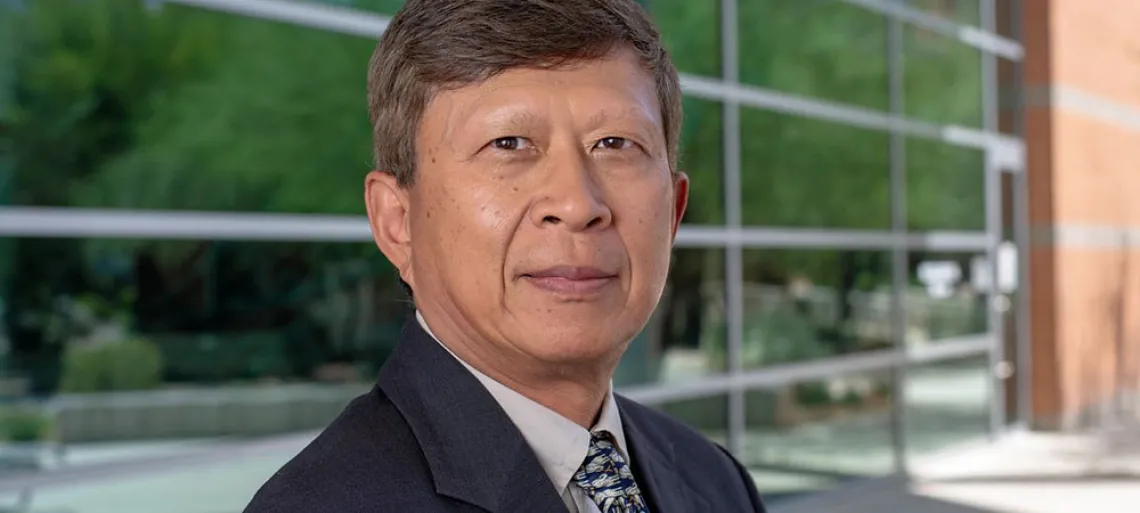How Artificial Intelligence Can Solve Disparate Problems

Hsinchun Chen is a University of Arizona Regents Professor in the Department of Management Information Systems at the Eller College of Management, which is ranked among the top five programs in the nation. He also is the Thomas R. Brown Chair in Management and Technology and the director of both the Artificial Intelligence Laboratory, which he founded at the university 35 years ago, and the AZSecure Cybersecurity Fellowship Program.
Chen has been with the MIS department since 1989. He is an expert in areas ranging from web computing, search engines, and digital libraries to intelligence analysis, biomedical informatics, data mining, and knowledge management. He has authored and edited hundreds of publications on these topics and has served as an adviser for national and international research programs in his areas of expertise.
Chen also is a successful entrepreneur and founder of Knowledge Computing Corporation, a university spinoff IT company and a market leader in law enforcement and intelligence information sharing and data mining.
Q: You developed the AI Lab 35 years ago, when the internet as we know it was still nascent. Why did you think it was important to focus on artificial intelligence at that time?
A: I didn’t know AI was coming. That time was AI winter; right now, it’s AI summer. AI has gone through many swings of summers and winters. This is a large summer that may last for a few years.
I just liked AI because my personality is driving me to pursue topics that are new, that are interesting, that are unknown. AI is always on the forefront of computer science in exploring things that humans are good at doing but computers are not — yet. That type of a paradigm inspires me. I’m always using AI to solve problems that are important in the world.
Q: What inspired you to develop COPLINK?
A: I accidentally [got] into COPLINK because one of my students was a police officer, and he said, “Dr. Chen, you’re doing digital library to search medical literature. Can we use that for police report?” I said, “Why not?”
The first part took two years: Fifty undergrads collecting data from different sources, normalizing it, creating the keys — or the person’s name, address, fingerprints, everything. After we finished doing that, we added the AI system, like a detective. If I cannot find a criminal, but I know his co-offenders, his past victims, et cetera, I can find associations. I can find their next potential targets. In the past, this takes days. Now it takes two seconds.
Now almost all agencies in USA and Europe are using that.
Q: I understand you developed SilverLink, which predicts falls, for your mother. Can you explain how it works?
A: There are sensors that senior citizens wear on their necks, put on the toilet seats, put on the shower curtain, put on the door of the fridge. So it patiently collects data about their movements. Those records are sent to a phone acting as a server and sending data to the cloud.
This is a project that was designed for my mom and people like her, senior citizens. This project is a move from [a] document database to sensor data collected in real time. So it allows you to track movement for detection or even for prediction. This system is a guardian angel for you, overlooking you and looking at your movements, and sends out alert signals to a dispatcher when something happens to you.
Q: I read that there are Barbie dolls in the AI Lab. Can you explain why?
A: [Barbies] are not regular toys anymore. They are “smart toys,” so they have internet capability. And that introduces vulnerabilities. Smart toys have a mechanism for talking and storing and transmitting information. In between collecting and transmitting data, that information can be hijacked. We research how it can be hacked or exploited and how to protect consumers from malicious activity with AI.
Toys could talk back to you if someone has hijacked your Barbie doll, or hijackers can use a camera to monitor your kids or talk to the kids without parents present. We take things apart and find the vulnerabilities in different “internet of things” devices, like Barbie dolls. An interesting story: To get approval to buy the $39 Barbie dolls was one of the most difficult purchases of my academic career because we had to justify why an AI lab needed to purchase a Barbie doll.
Q: How do you think AI will change the nature of work?
A: AI can change you; you can change AI. In my area, I’m an AI developer; I’m an AI adopter. So I don’t let AI change me because I can change AI in a way. I can take AI apart and change the code and use it to do things I want it to do — but that’s not an ability that most people have, regular people.
AI can change the nature of work; there’s no question about that. But I think the more important thing is: How do you shape AI into something that fits with you? You need to have a certain level of sophistication. You cannot just be a user. You have to have the ability to shape AI in a way that best fits your work or your industry.
You have to control AI, not let AI control you .
A version of this article originally appeared in the Arizona Alumni Magazine. It was written by Riley Beck.

